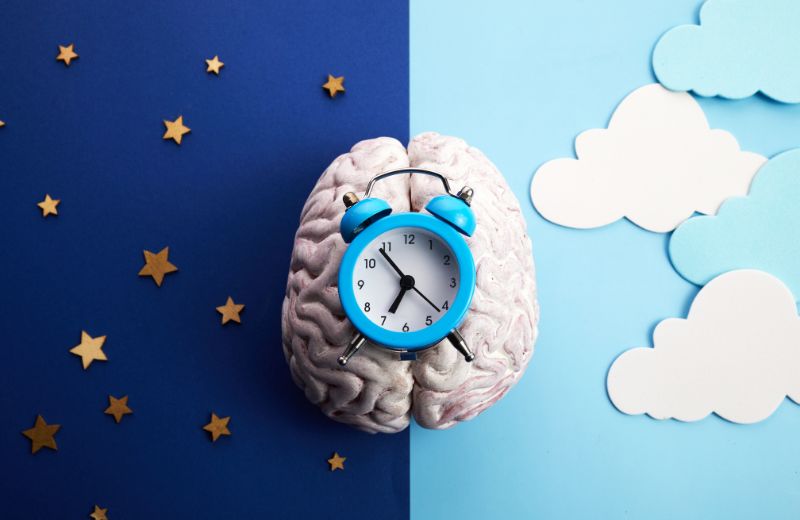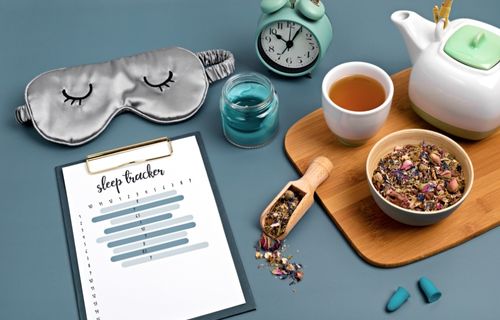Sleep is a natural part of every human being’s life and is a key factor to perform day-to-day tasks. A night owl, an early bird etc are all terms we come across while discussing someone’s sleeping pattern. Chronotypes discuss the peak activity and energy time for each person and how this impacts sleep patterns. Hence, building a sleep routine needs knowledge of one’s chronotype to better adjust life to it.
Every single one of us has faced the consequences of waking up on the wrong side of the bed. When such restlessness nights become a recurring pattern, they can pose serious health problems. Sleep deprivation has been associated with distress in all major organ systems of the human body. It has also been linked to mood disorders, with depression contributing as a cause and an effect of sleep deprivation.
Physiology of Sleep
 In medical terminology, sleep is defined as a state with minimized response to external stimuli. Most bodily functions are slowed down to put the body at rest. Even if it seems that the brain is at rest, the brain undergoes various stages during a sleep cycle. These stages are controlled by the Suprachiasmatic nucleus, located inside our hypothalamus.
In medical terminology, sleep is defined as a state with minimized response to external stimuli. Most bodily functions are slowed down to put the body at rest. Even if it seems that the brain is at rest, the brain undergoes various stages during a sleep cycle. These stages are controlled by the Suprachiasmatic nucleus, located inside our hypothalamus.
The suprachiasmatic nucleus is also responsible for maintaining the Circadian rhythm – the basic rhythm our bodies show in response to a 24-hour day cycle. Circadian rhythm follows the pattern of light and darkness during the day to decide our natural sleep cycle. This is under the control of melatonin- a hormone.
How to improve
Before embarking upon the journey of improving sleep hygiene it is important to rule out the possibility of any underlying sleep disorder.
■ Habits: Sleep is a habitual behaviour, thus one has to ensure that one adheres to the same timings of sleeping every night. This includes prepping for going to sleep to teach your brain to unwind before sleep. A schedule that assists one’s lifestyle can be executed in the long run. Avoiding daytime naps also helps adhere to the schedule, otherwise, the circadian rhythms are disrupted.
■ Environment: A comforting environment induces the best sleep. Mattress, pillows and room temperature all add to the comfort of dozing off. Dark rooms with warm temperatures best enhance sleep and even reduce the occurrence of nightmares and other forms of sleep distress.
■ Sleep Prep: It is important to wind down before actual sleep as it provides a smooth transition from wakefulness to sleep. Blue light has been studied for its detrimental effect on Circadian rhythm. Hence, it is advised to avoid screen time for at least an hour before sleeping. Devices like phones, laptops, computers, and televisions should be avoided. Books and other forms of hard media are the preferred modes of night-time reading.
■ Exercise: Even though it may appear that tiring one out before sleeping is a good approach, it can backfire as exercise releases endorphins and catecholamines. Both of these hormones activate the mind’s reticular system. Therefore, the best advice is to exercise at least one hour before the daily scheduled time of sleep.
■ Diet: Diet controls every aspect of our body, and the same is implied in the case of sleep. Last meals should be consumed 3-4 hours before sleeping. Caffeine, alcohols and other such stimulants highly irritate the normal functioning of our brain, especially the hypothalamus. Decreasing their consumption before sleep and eventually cutting them off is the best approach to ensure better sleep quality. Inclusion of melatonin is also beneficent to the aid in sleeping.
Conclusion
As the discussion above suggests, sleep is a crucial aspect of waking up and feeling energized in the morning, graceful ageing and healthy life. Therefore, it is imperative to understand the body’s own needs for rest. What is suitable for a co-worker might be sub-optimal for you. Sleep patterns and need varies not only with individuals but also with the same individual across their lifespan. Understanding these key points and sticking to just a handful of habits can induce better sleep habits.
To understand them better, following YouTube video can assist:




